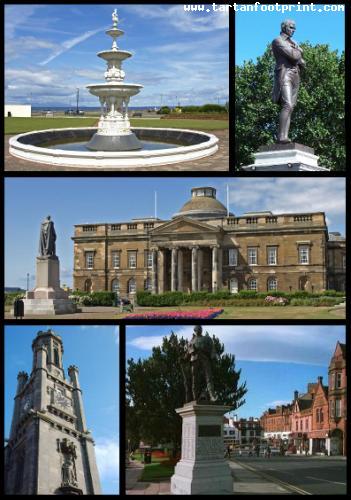You seem to be using an older version of Internet Explorer. This site requires Internet Explorer 8 or higher. Update your browser here today to fully enjoy all the marvels of this site.
November 19, 2018 by Alexander Meldrum
Scotlands Citys
Ayr
Ayr (/??r/; Scottish Gaelic: Inbhir Àir, "Mouth of the River Ayr") is a large town and former Royal Burgh on the west coast of Ayrshire in Scotland.
It is the administrativ...Scotlands Citys
Ayr
Ayr (/??r/; Scottish Gaelic: Inbhir Àir, "Mouth of the River Ayr") is a large town and former Royal Burgh on the west coast of Ayrshire in Scotland.
It is the administrative centre of the South Ayrshire Council area and historic county town of Ayrshire. Ayr is currently the most populated settlement in Ayrshire and is the 12th most populous settlement in Scotland.
The town adjoins the smaller town of Prestwick to the north, forming a single continuous urban area with the town.
Ayr was established as a Royal Burgh in 1205, serving as Ayrshire's central marketplace and harbour throughout the Medieval Period and remaining a well-renowned port across the Early Modern Period.
On the southern bank of the River Ayr sits the ramparts of a citadel constructed by Oliver Cromwell's men during the mid-17th century. Towards the south of the town is the birthplace of Scottish poet Robert Burns in the suburb of Alloway.
Ayr has remained a popular tourist resort since the expansion of the railway in 1840 owing to the town's fine beach and its links to golfing and Robert Burns.
Ayr was represented by a Conservative MP continuously for a period of 91 years – from 1906 (as part of the Ayr Burghs constituency) until 1997, followed by Labour from 1997 to 2015, and the Scottish National Party from 2015 to 2017.
The town forms part of the Ayr constituency in the Scottish Parliament, the first Conservative constituency seat in the Parliament, which has been represented by Conservative MSP John Scott since a by-election in 2000.
In the UK Parliament, Ayr is situated within the Ayr, Carrick and Cumnock constituency which has been represented by Conservative MP Bill Grant since the 2017 general election.
Ayr is one of the largest retail centres in the south of Scotland and was recognised as the second healthiest town centre in the United Kingdom by the Royal Society for Public Health in 2014.
Ayr has hosted the Scottish Grand National horse-racing steeplechase annually since 1965 and the Scottish International Airshow annually since 2014. The town also accommodates the headquarters of the Ayr Advertiser and Ayrshire Post
History
The areas surrounding modern day Ayr were known to have been occupied by Mesolithic hunter-gathers more than 5,000 years ago.
There is also a Neolithic standing stone at the end of Stonefield Park in Doonfoot, which is believed to have been upended as a place of sun worship by Stone Age men.
Establishment and early settlement (1197–1500)
Ayr's Coat of Arms, as depicted on Ayr's old New Brig
In 1197, King William the Lion ordered that a new castle be built between the River Ayr and the River Doon. It is believed that the castle was a wooden structure built around Montogomerie Terrace.
Ayr was later established as a royal burgh and market town on 21 May 1205 by King William the Lion. At its establishment, the burgh encompassed a single street (The Sandgate) and the Church of St John.
By 1225 the town reached as far as Carrick Street and Mill Street along the south side of the River Ayr. The town grew quickly to become the main seaport, marketplace and administrative centre for Ayrshire.
The King gifted fishing rights to the burgh for the River Ayr and the River Doon in 1236. In the following year, a timber bridge was built across the River Ayr, linking the town to the north side of the River.
Since 1261, annual fairs were held in the town. At this time the town had a recorded population of 1,500 and served as a major port on the west coast.
The town was unsuccessfully attacked by Norwegian forces in 1263 and invaded and occupied by English forces from 1296 until 1312 as part of the Scottish Wars of Independence.
In 1298 the original castle at Ayr was destroyed by Robert The Bruce's forces. On 26 April 1315, a Parliament of Scotland was held in Ayr by Robert The Bruce at St. John's Tower by the sea.
As a Royal Burgh, Ayr was afforded various privileges relating to trade, tolls and fishing rights, which allowed the town to out-compete the neighbouring free burgh of Newton which was established in the 14th century and situated on the north side of the River Ayr.
Go to Wikipedia for full History
In this photo:


